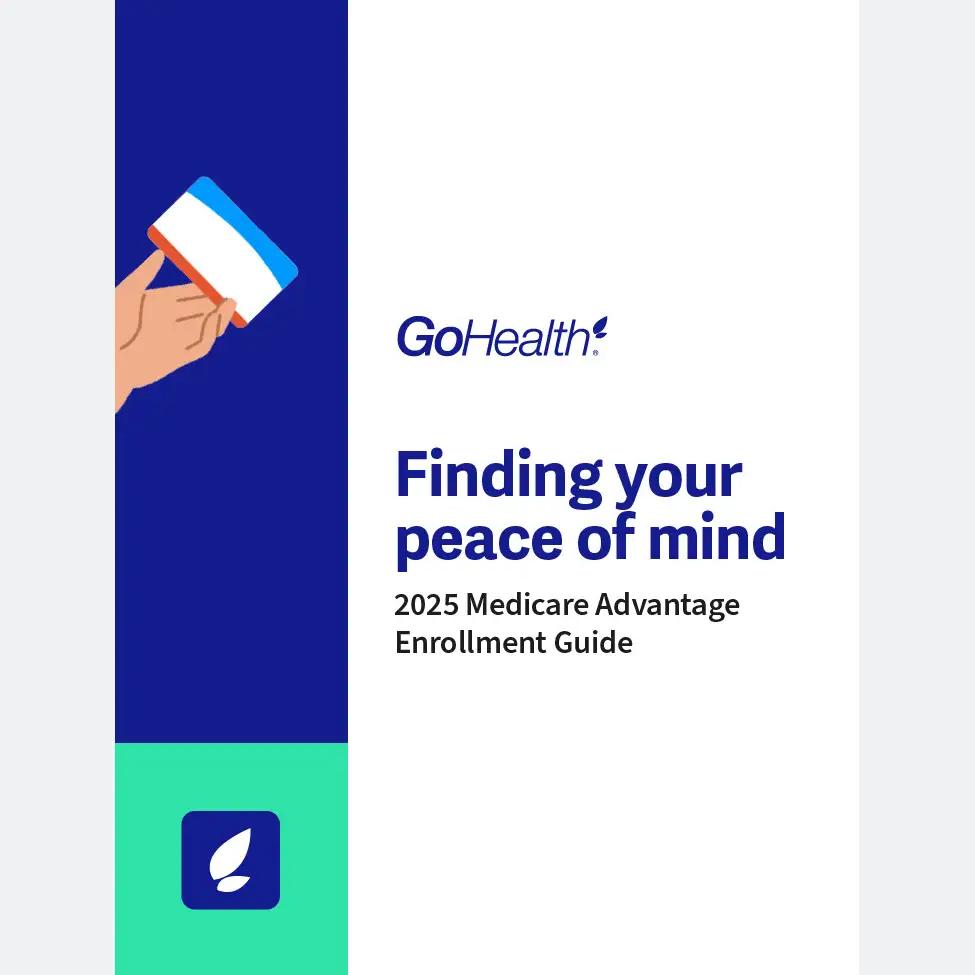
Understanding Medicare / New to Medicare Guide
Medicare Eligibility Requirements
Medicare can be tricky, but we’re here to help you make sense of everything and get ready to enroll.
Jump to Section
Get the Guide
GoHealth’s 2025 Medicare Advantage Enrollment Guide can help you get started with:
- Understanding your Medicare options
- Knowing when to enroll or change plans
- Answering frequently asked questions
- Getting ready to enroll

Is everyone over 65 eligible for Medicare?
Most U.S. citizens and permanent residents qualify for Medicare when they turn 65. People who have certain disabilities may enroll earlier.
Tip: For most, the first opportunity to sign up for Medicare is the Initial Enrollment Period, which lasts for seven months, including three months before and after the month when you turn 65.



How do I enroll?
Once your Initial Enrollment Period begins, you can apply for Medicare coverage through the Social Security Administration online, by phone, or in person.
Tip: If you have already received Social Security benefits for at least four months when you turn 65, you may be automatically enrolled in Medicare; otherwise, you need to sign up.
Further reading:
What do I need to know about Parts A and B?
Original Medicare consists of two parts: Part A is hospital insurance, and Part B is medical insurance. Most people don’t pay a monthly premium for Part A, but they do for Part B.
Tip: If you don’t have health insurance from another source, sign up for Part B as soon as you can to avoid a late enrollment penalty.
Medicare Enrollment Calculator
Am I eligible for Medicare Advantage (Part C)?
Medicare Advantage (Part C) plans from private insurance carriers match the coverage from Original Medicare. They may also offer additional benefits. Medicare Advantage Prescription Drug plans include Part D prescription drug coverage.
Tip: You must be enrolled in Medicare Parts A and B before you can switch to a Medicare Advantage plan.
Further reading:
- How to Enroll in a Medicare Advantage or Part C Plan
- Medicare Supplement (Medigap): The Essentials of Enrollment
- 4 Tips for Enrolling in a Medicare Advantage Plan
- Medicare Advantage Open Enrollment Period
- Qualified for Disability? Explore Your Medicare Coverage Options
- What Is the Medicare Advantage Trial Period?
- You’ve Enrolled in a New Medicare Advantage Plan; What’s Next?


What do I get with Medicare Part D?
Medicare Part D plans are provided by private insurance carriers to cover prescription drugs.
When you enroll in Original Medicare, consider a Part D plan even if you’re not currently taking prescription drugs. Otherwise, you could pay a late-enrollment penalty when you do sign up.
Tip: Medicare Advantage Prescription Drug plans include Medicare Part D prescription drug coverage.
Further reading:
When can I enroll in Medicare?
Medicare has several enrollment periods in addition to the Initial Enrollment Period when you first become eligible:
- The Annual Enrollment Period (October 15 – December 7) lets you make yearly changes to your coverage. This includes switching between Original Medicare and Medicare Advantage or adjusting your Part D drug plan.
- The Medicare Advantage Open Enrollment Period (January 1 – March 31) allows Medicare Advantage members to make plan changes.
- Special Enrollment Periods are available for specific life events, such as losing employer-provided coverage or moving out of your current plan’s service area.
Tip: Take advantage of these enrollment periods to adjust your coverage as your needs change.
Further reading:
- What Is the Medicare General Enrollment Period?
- Can I Enroll in a New Medicare Plan After Moving?
- Losing Health Coverage? You Could Qualify for a Medicare Special Enrollment Period.
- What to Do When a Declared Emergency or Disaster Delays Your Medicare Enrollment
- When to Sign Up for Medicare: Know Your Enrollment Periods
- Indian Health Services and Medicare
We can help you find the right plan from the right carrier
Our PlanFit technology helps you narrow down from dozens of options to one that’s right for you. With the support of our licensed insurance agents, you can feel confident you’re getting a plan that fits your needs.


Want to know more about your Medicare options?
We’re here to help you navigate your choices and find the right plan for your needs.
